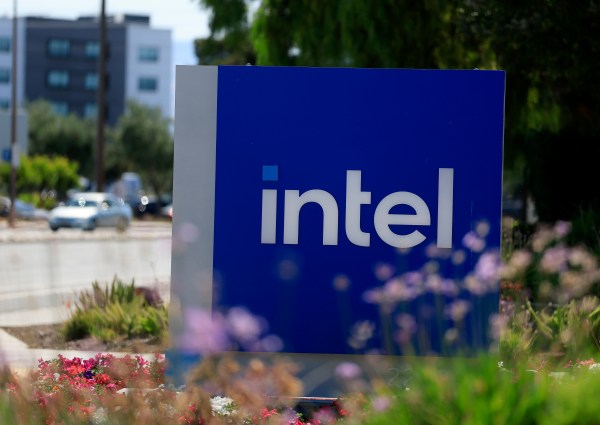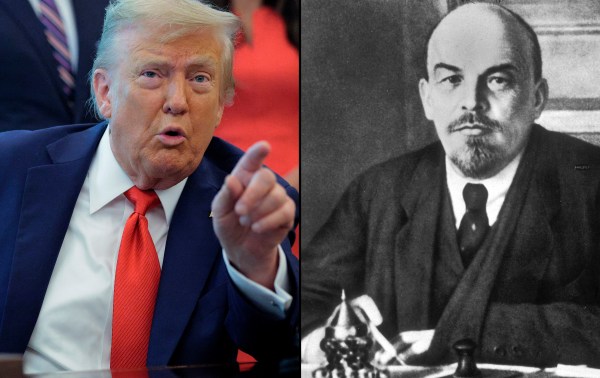For decades, Sinn Féin, a political party in Northern Ireland, acted as the political arm of the Provisional Irish Republican Army (IRA), a terrorist group fighting to end British rule in Northern Ireland. The two groups were formally separate but shared the same goals and, sometimes, overlapping membership. Sinn Féin pursued Irish irredentism through the political process, including by running for and winning seats in the British and Northern Irish parliaments. The IRA pursued the same goals through intimidation, assassination, and bombings.
The arrangement gave Sinn Féin an edge in political bargaining. They could present themselves as relatively moderate compared to the murderers on their side. Sinn Féin could always argue that if it did not get its way, frustration would boil over and fuel the IRA’s terrorist campaign. IRA violence hung like a Damocles’ sword, an ever-present threat, a heckler’s veto over northern Irish politics. If the political process didn’t produce outcomes favorable to their cause, it could always pivot to terrorism. In exchange, Sinn Féin gave political representation and ideological legitimacy to the IRA. The Sinn Féin-IRA alliance enabled the republican side to have its cake and eat it too: I tried to play fair, but look what you made me do.
I am reminded of these dynamics when I observe the evolution of the Republican Party. For example, following the FBI’s raid on Donald Trump’s residence earlier this week, right-wing commentators exploded with threats of violence and predictions of civil war. Once beyond the pale, such rhetoric is now almost routine: Those giving it voice were refining a playbook increasingly deployed in the year and a half since the January 6 attack on the U.S. Capitol.
In the immediate aftermath of that attack, several Republican congressmen who condemned President Donald Trump, blamed him for instigating the attack, or suggested they were open to impeaching him received death threats. Michigan Rep. Peter Meijer wrote shortly after the attack about a fellow representative who bowed to the terrorists’ demands (and “terrorist” is the right word for someone who uses or threatens violence to influence politics):
My colleague told me that efforts to overturn the election were wrong, and that voting to certify was a constitutional duty. But my colleague feared for family members, and the danger the vote would put them in. Profoundly shaken, my colleague voted to overturn. An angry mob succeeded in threatening at least one member of Congress from performing what that member understood was a constitutional responsibility.
Rather than ignore the threats or undermine their power by impeaching and convicting the president, 95 percent of Republicans in the House of Representatives voted against impeachment and 86 percent of Republicans in the Senate voted against conviction. While some surely voted on the basis of sincere beliefs, it is also true that some Republicans were cowed into line by threats on their lives. They allowed themselves to become the conduit through which violence and the threat of violence influenced the political process.
Republicans who did vote to impeach or convict were predictably targeted with more death threats. This is how the IRA kept Sinn Féin in line and successfully leveraged terrorism into political influence. Political violence, and the threat of it, now hangs like a specter over American politics, and one political party—consciously or not—is benefitting from the leverage that threat creates.
A metamorphosis.
The Republican Party’s metamorphosis goes beyond its behavior in the immediate aftermath of January 6. In the year and a half since, prominent Republicans and right-wing media figures have worked hard to downplay the Capitol attack, turn its perpetrators into heroes and martyrs, obstruct investigations, rewrite history, turn the attack into a badge of pride and a qualification for advancement in Republican politics, and endorse the election denial conspiracy theory. Put another way, an extremist movement centered around election denialism and January 6 is taking over the Republican Party at the same time that the threat of right-wing political violence is growing.
Consider the pattern over the past year. The Republican congressional leadership refused to support a bipartisan January 6 commission and the House Republican caucus ejected Rep. Liz Cheney from leadership for backing it. Tucker Carlson ran a three-part “Patriot Purge” special on Fox News that claimed the arrests of January 6 attackers was a “domestic war on terror.” Rep. Madison Cawthorn characterized January 6 attackers who are in jail or on trial “political hostages,” and some local Republican chapters marked the anniversary in January 2022 with vigils and protests against the perpetrators’ alleged unjust treatment.
Those who claim Trump won the 2020 election but had his victory stolen from him by historic levels of electoral fraud have become not just mainstream but essentially the dominant voice in the party. Trump continues to insist the election was stolen and claim that January 6 was a patriotic protest. He endorsed scores of candidates at all levels of office across the country who parrot his line about the 2020 election. Most of them are winning. At least 11 participants in January 6 were elected to office last year.
All 22 of Trump’s candidates won their races in Ohio and Indiana in May, including senatorial candidate J.D. Vance. Trump backed winning candidates in Nebraska and West Virginia later that month, including several congressmen who voted to overturn the election. His pick for Pennsylvania governor, Doug Mastriano, and for the U.S. Senate from Georgia, Herschel Walker, won their primaries, as did Ken Paxton, the Texas attorney general who led legal efforts to overturn the election.
South Carolina Rep. Tom Rice, who voted to impeach Trump after January 6, lost his primary to a Trump-endorsed challenger in June. Illinois Rep. Mary Miller, who voted to overturn the election and got Trump’s endorsement, defeated Rep. Rodney Davis, who did not. Mainstays of the election denial movement, Reps. Lauren Boebert, Marjorie Taylor Greene, and Paul Gosar, easily won their primaries. Kari Lake, an extreme election denier, won the primary for Arizona’s governorship in August. In fact, Arizona was a sweep for Trump: He also endorsed winning Senate candidate Blake Masters; secretary of state nominee Mark Finchem, who the New York Times reports is affiliated with the far-right Oath Keepers, and state senate nominee David Farnsworth, who defeated Rusty Bower, the Arizona House speaker who testified before the January 6 committee.
Most dispiritingly, Peter Meijer, who voted to impeach Trump, lost his primary to a Trump-endorsed challenger, as did Jaime Herrera Beutler in Washington state.
Trump’s record is not perfect. Election-denying candidates faced setbacks in the Idaho, Nebraska, and Georgia governor’s races. South Carolina Rep. Nancy Mace, who criticized Trump after January 6 (but did not vote to impeach him) survived her primary. A few other Trump critics ran unopposed. But the broad trend is clear. The Republican Party is increasingly the party of election denialism and January 6 minimizing, all at Trump’s behest.
Threats of violence.
The problem goes beyond January 6. Death threats have surged across the country. As terrorists realize death threats work, they are using them more often—including against Republicans who voted for President Joe Biden’s infrastructure package. Death threats to congressmen doubled by May of last year, compared to the year before. “These are not one-off incidents,” according to Vox, “Surveys have found that 17 percent of America’s local election officials and nearly 12 percent of its public health workforce have been threatened due to their jobs during the 2020 election cycle and Covid-19 pandemic.” Reuters tracked more than 850 individual threats against local election workers by Trump supporters last year, up from essentially zero in previous elections.
Thirty percent of Republicans told pollsters last October that they believed “Because things have gotten so far off track, true American patriots may have to resort to violence in order to save our country,” according to the Public Religion Research Institute. Nearly 40 percent of those who believed the 2020 election was stolen from Trump agreed with the statement. The New York Times reported last November about a town hall in Idaho at which a young man publicly “asked when he could start killing Democrats. ‘When do we get to use the guns?’ he said as the audience applauded. ‘How many elections are they going to steal before we kill these people?’”
When news broke that the FBI was searching Trump’s home, right-wing commentators, candidates, and elected officials argued that the United States government was illegitimate or that the FBI was essentially a tyrannical and unjust secret police. Greene called it “rogue behavior” and “political persecution” typical of countries “during civil war.” Gosar called the FBI “brownshirts,” a reference to the Nazi Party’s private militia (he apparently deleted the Tweet). Lake, the candidate for Arizona governor, said the FBI’s raid marked the day the government “turned against us.” She said it was an “illegitimate, corrupt regime” led by “tyrants.” If taken literally, such statements could easily encourage political violence.
A problem with deep roots.
Some critics may be tempted to dismiss January 6 and the recent upsurge of violent rhetoric as an aberration that will soon blow over. But the problem also has deeper roots than January 6 and the Trump presidency. There is a longer history of right-wing political violence, which suggests the problem is unlikely to go away. There is reason to fear the opposite: that January 6 was the point at which several strands of right-wing extremism came together and found new energy.
For example, there is a strand of extreme libertarianism, verging on anarchism, in the American political landscape that includes anti-government sentiment, a belief that the U.S. government had or would soon become a tyrannical regime, and other conspiracy theories. The ideas stretch back at least to the Posse Comitatus movement of the 1960s, the Sovereign Citizen movement, and the militias of the 1990s. Timothy McVeigh invoked some of these ideas when he bombed a federal building and murdered 168 people in Oklahoma City in 1995. Echoes of anti-government sentiment and conspiracy theorizing again surfaced when Jared Loughner shot and nearly killed Democratic Rep. Gabby Giffords in 2011.
White nationalism is also a persistent presence in American life. Dylann Roof’s murder of nine black parishioners at Emanuel African Methodist Episcopal Church in 2015, the United the Right rally in Charlottesville, Virginia, in 2017, and Patrick Wood’s murder of 23 people in El Paso, Texas, in 2019 show that white nationalism remains an active and violent part of the American political landscape today.
Perhaps most controversially, there is also a strand of domestic religiously motivated terrorism. Christian terrorists murdered 11 people in attacks on abortion clinics in the 1990s, and Eric Rudolph invoked Christian rhetoric and claimed he was fighting abortion and socialism when he bombed the Atlanta Olympics in 1996. Recent antisemitic attacks, including shootings at synagogues in Pittsburgh in 2018 and Poway, California, in 2019, both by white Americans, likely came from a mix of religious and racial motives (the Poway shooting seems more clearly to have been religiously motivated).
These three strands of violent right-wing extremism—libertarian, racist, and religious—are not definitionally linked, but they can overlap in the hearts and minds of those already given to extremism and violence. And Trump seems to have become a focal point for all of them. Casear Sayoc did not invoke any specific ideology when he mailed pipe bombs to former President Barack Obama, several Democratic members of Congress, and left-leaning media outlets in 2018; rather, he seems simply to have focused his hopes on Trump and his grievances on the president’s critics.
That kind of convergence seems to have happened again on January 6, 2021. The attack on the U.S. Capitol reflected all three kinds of right-wing extremism. Like extremist libertarian movements, the attackers voiced anti-government sentiment and suspicion that government institutions were knowingly defrauding the American people in service to a secretively authoritarian regime. They repeated the Stop the Steal and QAnon conspiracy theories. White nationalism was also evident. Some participants carried the Confederate flag. The Proud Boys, who helped initiate the violence, verge on open white supremacy, and several African American Capitol police officers were targeted with racial insults, epithets, and harassment during the attack.
Finally, Christian nationalism was also present. Participants flew the Christian flag, carried signs saying “Jesus saves,” and stopped to pray when they arrived on the floor of the U.S. Senate. “Jesus Christ, we invoke your name!” one called. The leader prayed, thanking God for the opportunity to send a message “that this is our nation … Thank you for filling this chamber with patriots that love you, that love Christ. Thank you for allowing the United States of America to be reborn. … In Christ’s holy name we pray, Amen!”
Loyalty to Trump is the defining feature of the GOP.
Of course, the left has its own problems with extremists. James Hodgkinson, a Bernie Sanders supporter, attempted to assassinate dozens of Republican congressmen at a softball field in 2017; left-wing secessionists attempted to form a breakaway commune in Seattle in 2020; and some rioters affiliated with Antifa and Black Lives Matter have resorted to political violence since 2020. The left has its own history, including the Weather Underground and other violent Marxist groups from the 1960s onward. None of that excuses the right, of course, and judging from recent history it is probably rational to fear right-wing terrorism more because they seem to be better at it.
The Republican Party stands for many things, such as lower taxes, strong national defense, and enforcement of immigration laws. None of these are objectionable or complicit with terrorism, and they used to be the defining feature of the party (and I still agree with most of them). But over the past five years, the defining feature of what it means to be a Republican has become whittled down to loyalty to Trump.
In the past year alone, the defining feature has been evolving further: It isn’t simple loyalty to Trump, but willing confinement to his epistemological bubble. To be a Republican is to live in Trump-land, to accept his version of reality, and to reject all contradictions as fake news, conspiracies, persecution, or elitist globalism. The Republican Party’s response to January 6 suggests that, with a few notable exceptions, the party is accepting its role as the mouthpiece and platform for extremists and conspiracy theorists who have a track record of political violence.
The arrangement is not wholly unprecedented in American politics. From 1915 through the 1940s, the Ku Klux Klan was essentially the armed wing of the Democratic Party. The Klan terrorized African Americans, Catholics, atheists, Native Americans, and immigrants to ensure one-party rule throughout the South. It worked. It worked because mainstream Democrats made peace with the terrorists on their side, benefiting from their votes and their intimidation while pretending they were unblemished by their crimes. They told themselves that party cohesion and the next election were more important than challenging the murderers who undermined the substance of American democracy for a half-century.
Something similar may be emerging again, this time with the Republican Party and a variety of extremist currents on the right. January 6 and election denialism is the focal point. Every effort to normalize January 6, endorse its cause, and valorize its participants rewards political violence, enhances its role in the political process, and incentives its further use. It also solidifies the Republican Party’s role as the mouthpiece, platform, and legitimizer of right-wing terrorists.
Republicans who go along with the “Stop the Steal” conspiracy theory, help excuse or mainstream the January 6 attack, spread disinformation about the election, or fail to denounce threats of violence are guilty of platforming baseless and dangerous ideas because terrorists told them to, and they are directly responsible for the Sinn Féin-ization of the Republican Party.







Please note that we at The Dispatch hold ourselves, our work, and our commenters to a higher standard than other places on the internet. We welcome comments that foster genuine debate or discussion—including comments critical of us or our work—but responses that include ad hominem attacks on fellow Dispatch members or are intended to stoke fear and anger may be moderated.
With your membership, you only have the ability to comment on The Morning Dispatch articles. Consider upgrading to join the conversation everywhere.